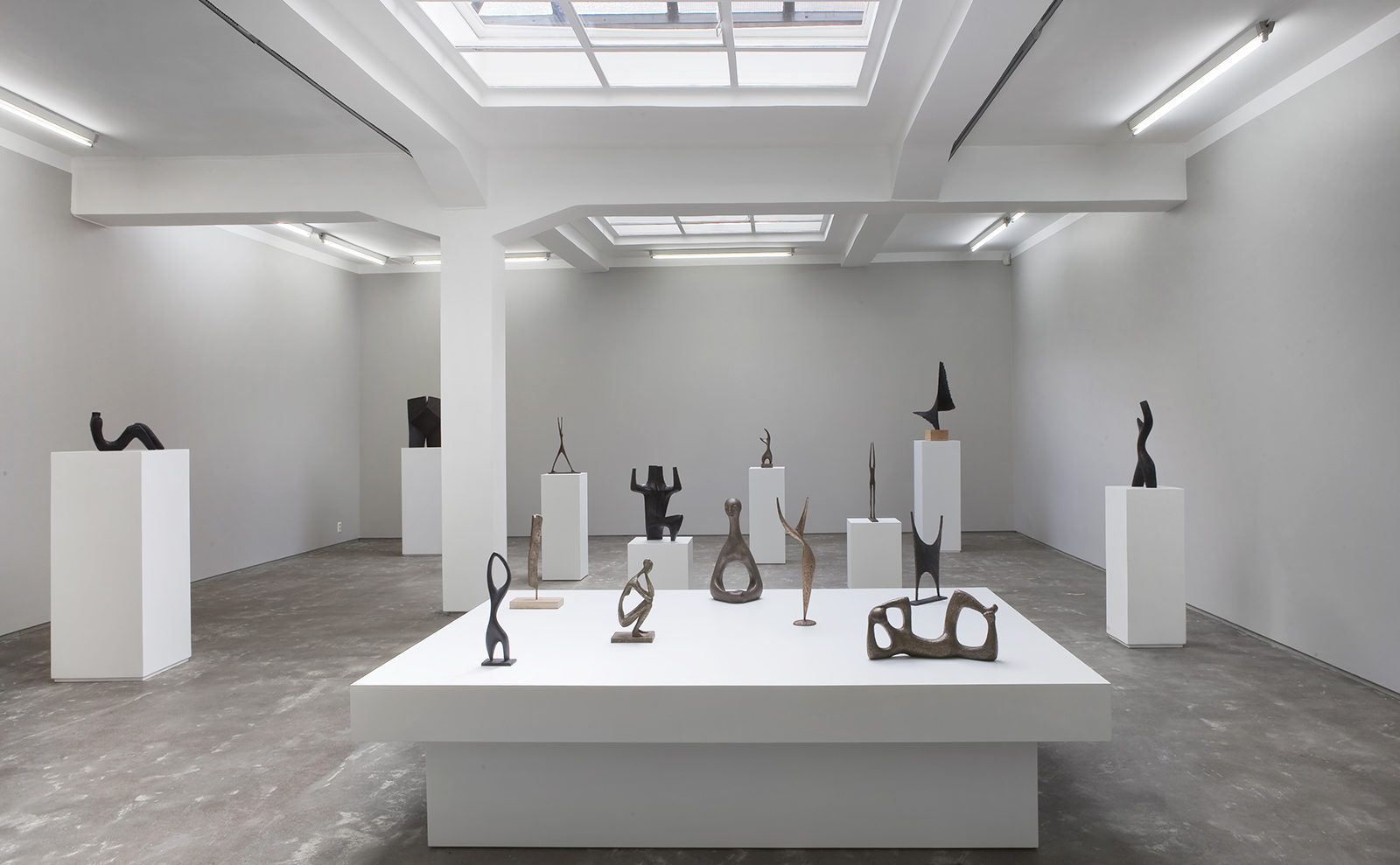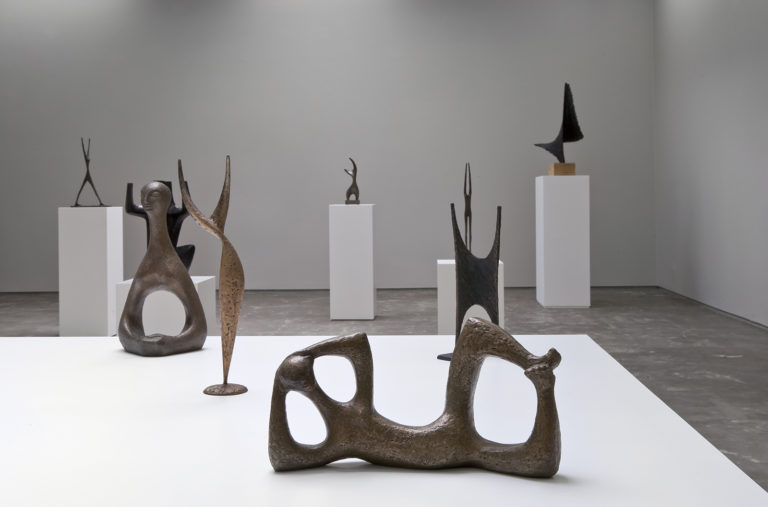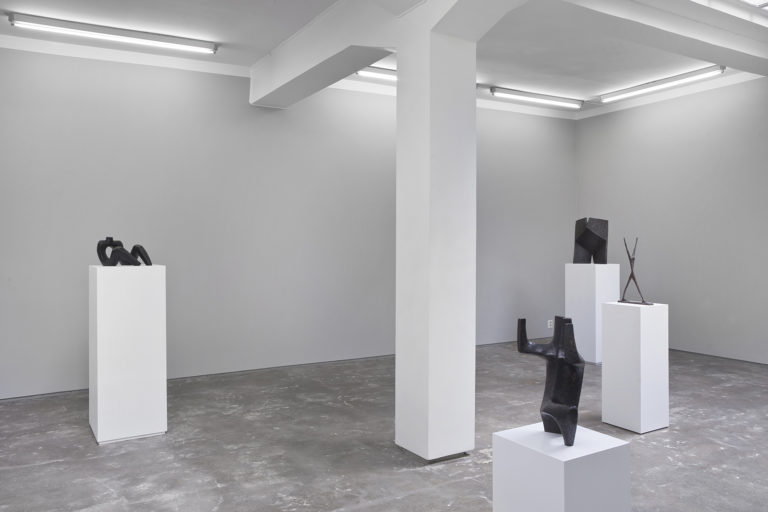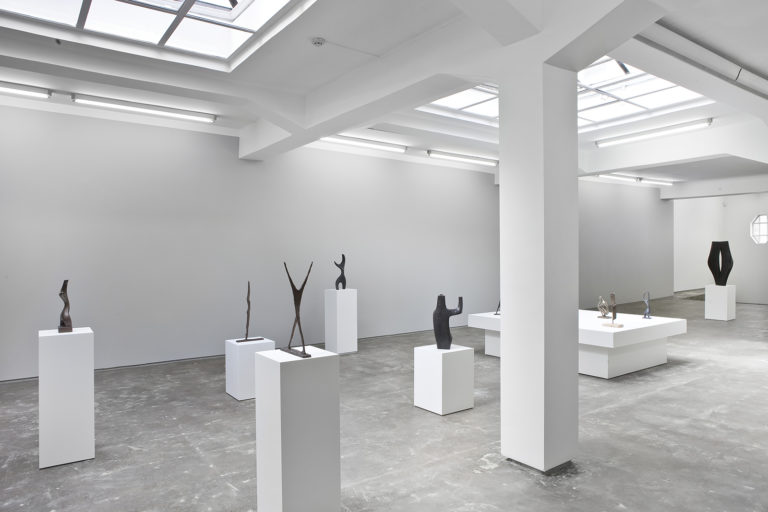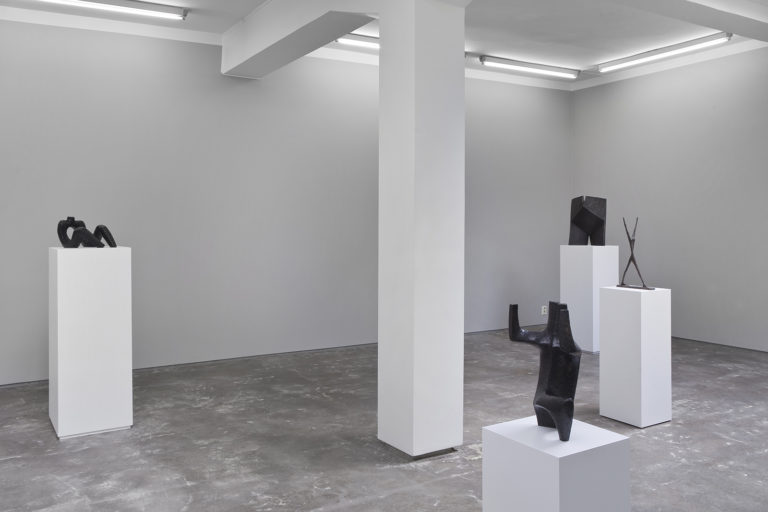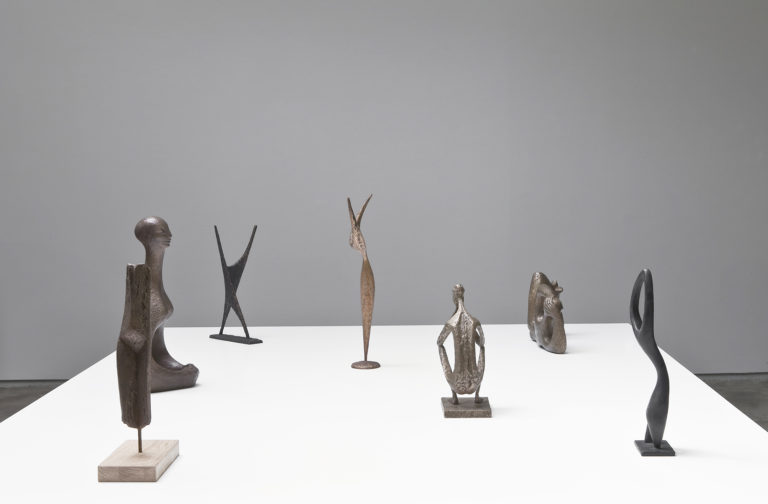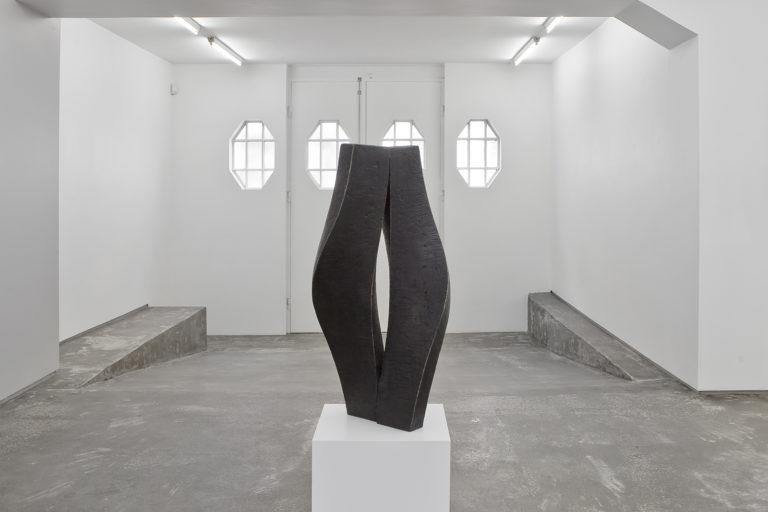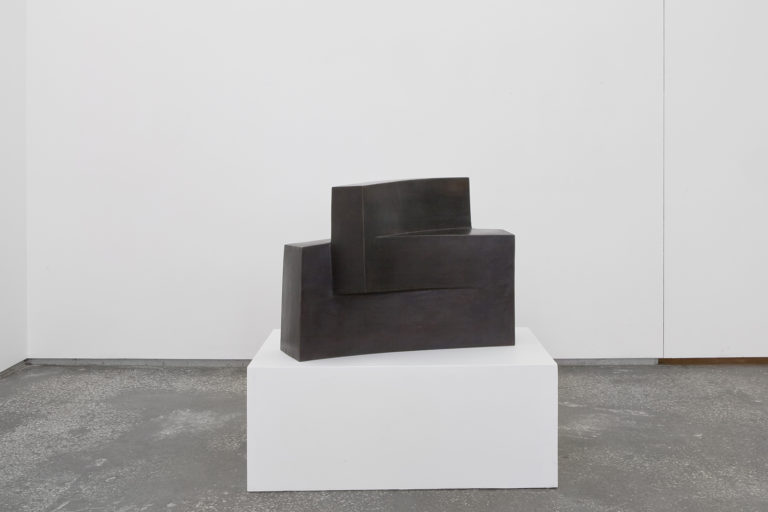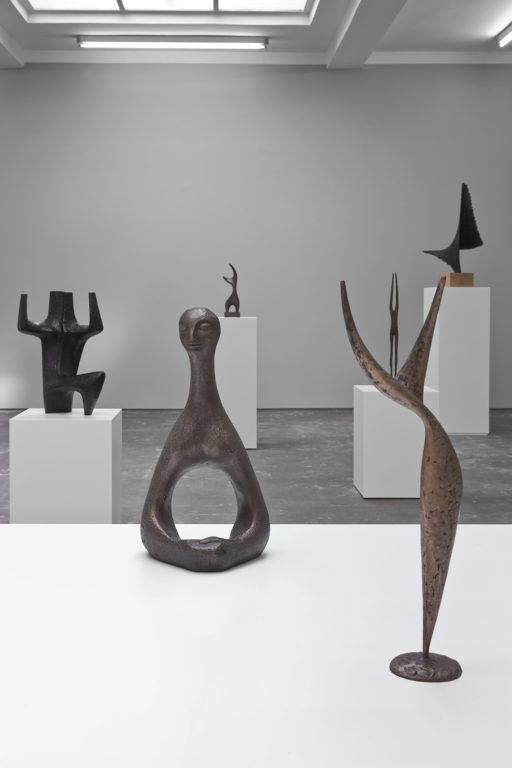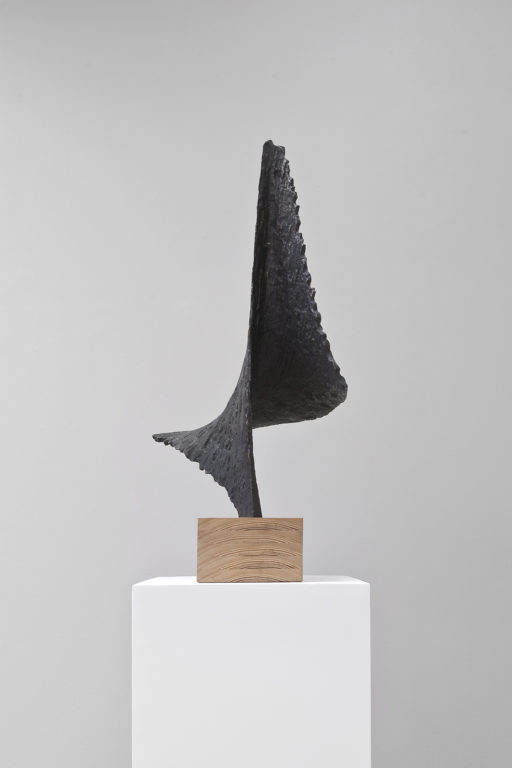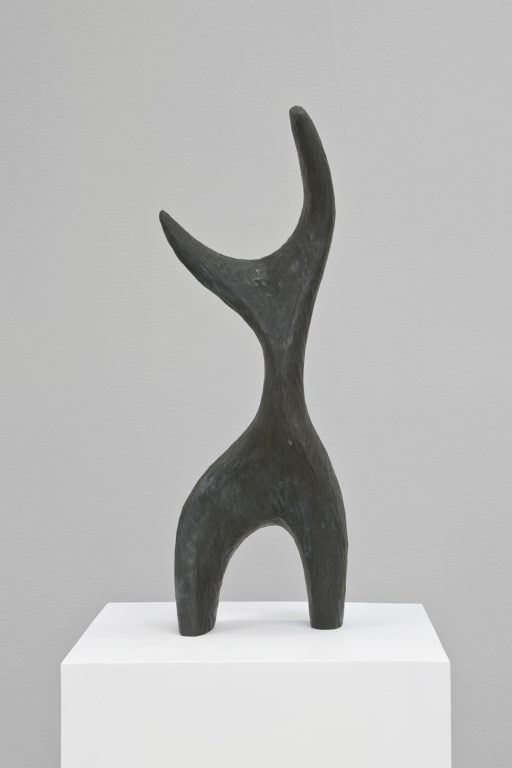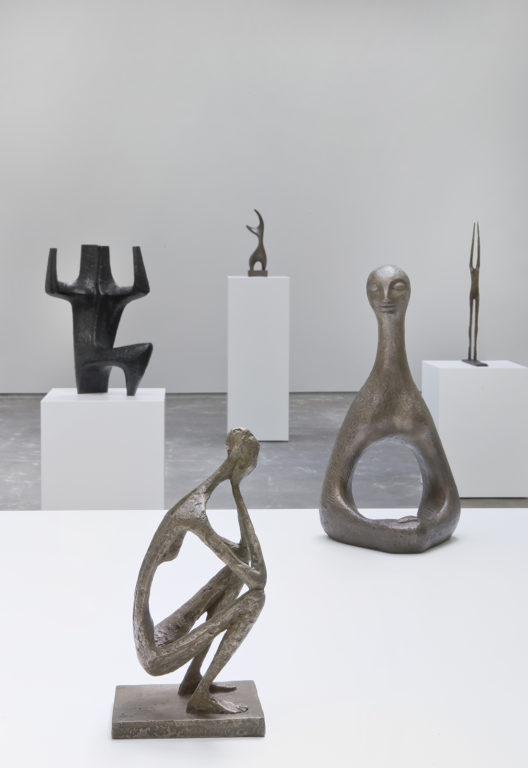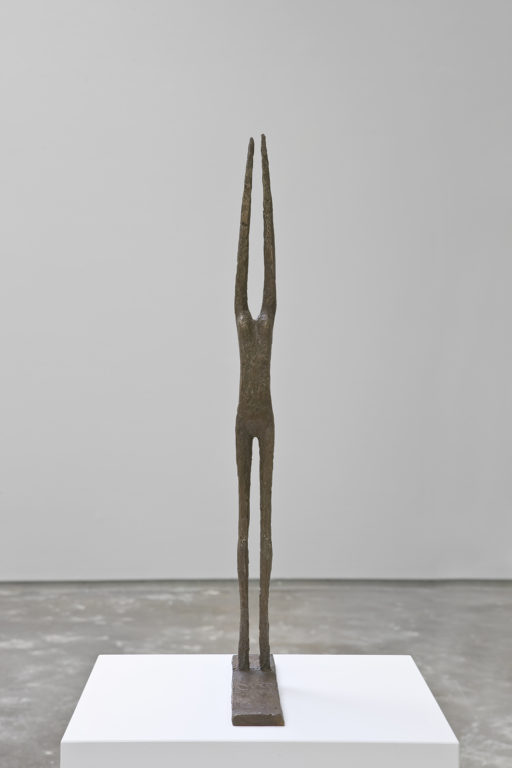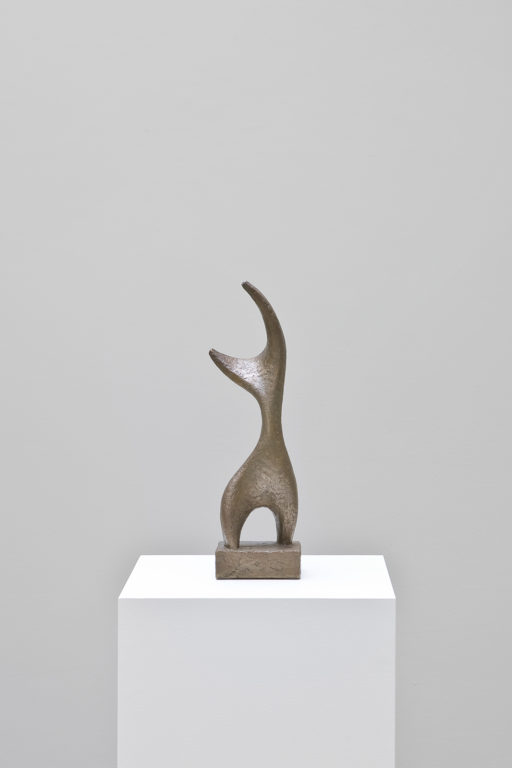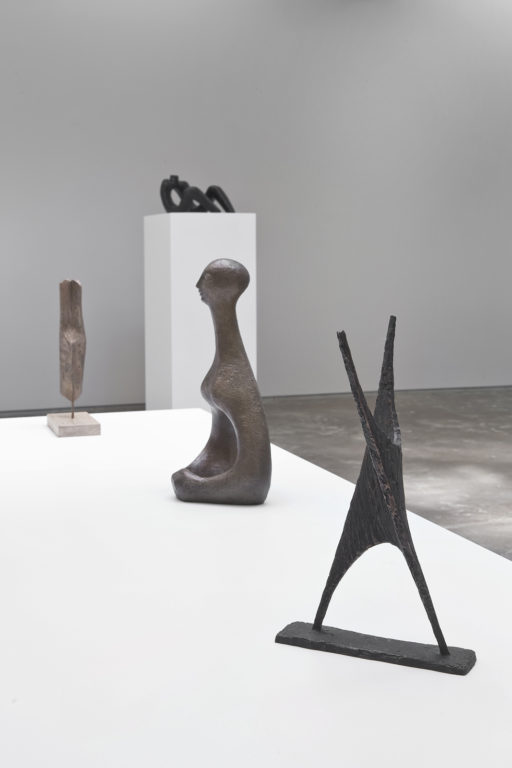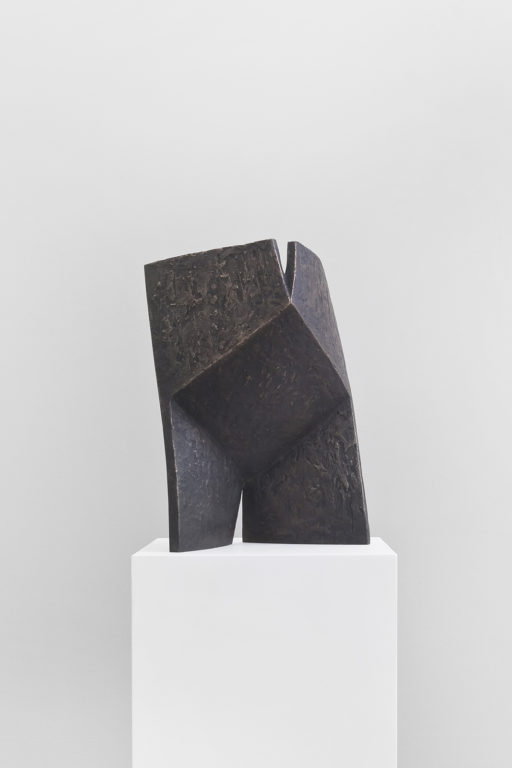Aase Texmon Rygh has created some of the purest abstract sculptures we have in Norway, which nevertheless have a distinctly personal touch. Her art represents an aesthetic that runs through much of what has proved to be sustained qualities in Scandinavian art in the postwar period. It is a modernism that is characterized by an acute understanding of the relationship between material, construction and space. This has resulted in an artistic expression that conveys a quiet authority lending the works a distinct presence.
Øivind Storm Bjerke, 2010*
OSL Contemporary is pleased to present the exhibition Female Forms with sculptures by Aase Texmon Rygh. Texmon Rygh (b. 1925) is considered a pioneer of Norwegian Modernist sculpture. Her vision of a simplified, abstracted sculptural language was developed when naturalistic sculpture still dominated the field in Norway, and for a period she was better known internationally. She has maintained her distinct expression throughout her career, and has put her mark on Norway’s public spaces with monumental sculptures at sites such as the University of Oslo and the University of Ås, public squares in towns like Karasjok, Svolvær, Tromsø and Tønsberg, as well as institutions such as the Henie Onstad Art Centre, Ekebergparken Sculpture Park and Trondheim Art Museum.
Texmon Rygh was educated at the Norwegian National Academy of Art in 1944 - 46 and at The Royal Danish Academy of Fine Arts in Copenhagen in 1948 - 49. She first exhibited at the 1950 Autumn Exhibition at Kunstnernes Hus, Oslo with Trepike I, a stylized and simplified, yet distinctly figurative female figure in wood, where the wood grain created an undulating ornament across its torso and dress. Already at this point the artist showed signs of what would become central to her oeuvre; an exploration of what Texmon Rygh calls ‘form principles’, and the balance between formal expression and the properties of the material. Her style moved rapidly towards further simplification and abstraction, where variations of geometric and symbolically charged forms – like the yin and yang shape, and especially the Möbius strip – recur in numerous varieties. For Texmon Rygh these forms hold interest as expressions of cosmic and mathematical principles, and as such the deep forces of nature and man.
However, Texmon Rygh has repeatedly returned to the female form as a central motif for exploration and in-depth study. The exhibition at OSL contemporary features a selection of such figures, developed between 1950 and 2003, most of them cast in bronze and of relatively modest size. The diminutive format emphasizes the spontaneous and experimental element present in several of these works, where rhythmic variation, movement and playful poses are essential features, as we see for example in Happy Hippie (1989), Torso (1950 - 52) or the reclining and smiling Rampejente (1951) where soft limbs together form an organic ornament. Other works, such as Torso (Maternité) (1978), point towards a stricter form of pure abstraction. Langsom vals (1981) and Fugato (1964) are examples of Texmon Rygh’s exploration of reduced and seemingly stable forms, where tensions converge - another one of her key artistic principles as seen in monumental and public works.
Smaller works and sculptural groups with the female body as a reference constituted a central part of the comprehensive presentation of Texmon Rygh’s oeuvre at the Norwegian National Museum of Art in 2014, but on the whole these works are less known than her more abstract and geometric sculptures. The female form nonetheless represents a central aspect of her artistic practice, both in terms of progression towards a more purely abstract expression, and in her aesthetic relationship with other international modernist sculptors.
Texmon Rygh is still active as an artist and in recent years her work has received increasing national and international recognition. In 2001 she was appointed a Knight, First Class of the Order of St. Olav, and in 2012 she was represented at the dOCUMENTA exhibition of international contemporary art in Kassel, Germany. In 2016 she will be included in Skulptur i Pilane, Sweden, and in October 2016 the Norwegian National Museum of Art will open the traveling solo- exhibition Evighetens form.
* Øivind Storm Bjerke, ‘Aase Texmon Rygh’, Forlaget Press, Oslo, 2010. (Unauthorised translation)
